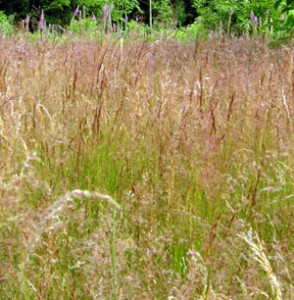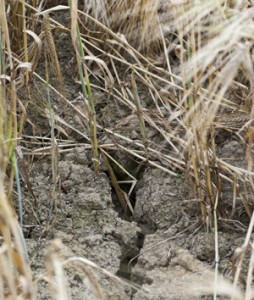Silicon in plants

Oxygen, silicon and aluminium are the three most common elements in the Earth’s crust; the aluminosilicates (and related compounds) make up up much of the inorganic skeleton of the soil. So, though silicon is abundant in nature, silicon is rarely talked about in terms of plant nutrition. People speak of nitrates, phosphates, potassium, and NPK fertilisers,; however, the Chinese make use of some thirty million tons of silicon fertiliser a year.
Certain plants are known to make use of silicon (especially the grass family - the Poaceae, formerly the Graminae). Plants take up silicon (in the form of monosilicic acid) and transport it within their tissues, often depositing in the form of silica aka silicon oxide (SiO2). In grasses, silica can make up 2 - 5% of the dry leaf mass. The silica, is often deposited as opalescent phytoliths.
This silica can offer
- structural support,
- increased rigidity and toughness
Thus, it helps
- create a physical barrier to pathogens and
- reduces the palatability and digestibility to herbivores.
 Silicon is, therefore, important in terms of such plants’ interaction with their environment. Beyond this, recent studies have indicated that silicon can offer increased resistance to heat stress, drought and salinity - this may be important as we try to maximise crop yield as we face climate change (which is associated with increased frequency of extreme events in terms of temperature and drought.
Silicon is, therefore, important in terms of such plants’ interaction with their environment. Beyond this, recent studies have indicated that silicon can offer increased resistance to heat stress, drought and salinity - this may be important as we try to maximise crop yield as we face climate change (which is associated with increased frequency of extreme events in terms of temperature and drought.
So though silicon is not regarded as an essential plant nutrient - it can be regarded as a beneficial one.
for a more technical account of the role of silicon - see https://www.botany.one/2018/08/ammonium-uptake-promotion-by-silicon-in-rice/
Comments are closed for this post.

There has been much study done with horsetail plant. Equisetum arvense that can be used as a compost tea for increasing the vitality and stamina of flowering plants and vegetables. Works for people too, improving nails and hair strength.
Lindy
10 July, 2018